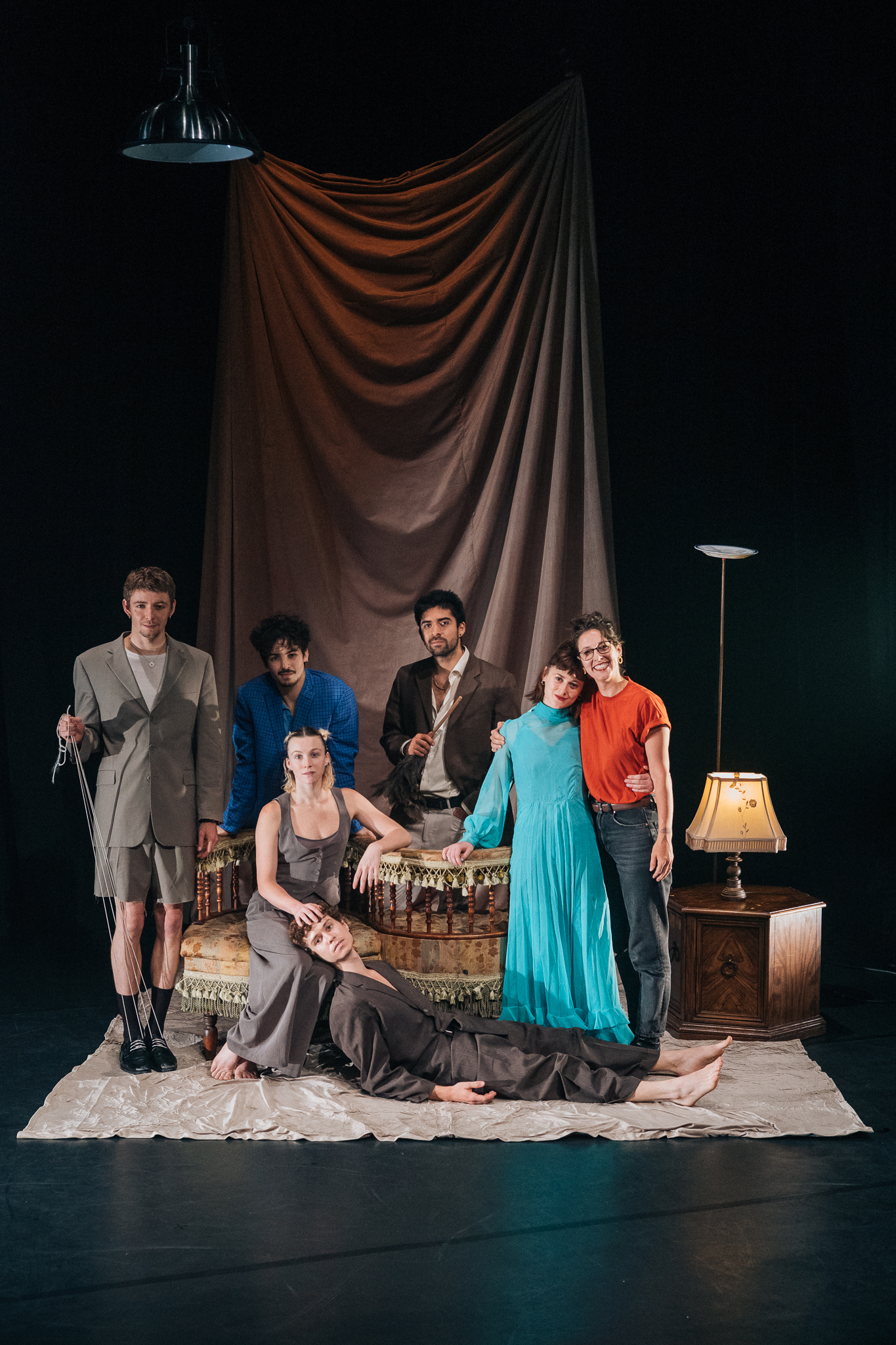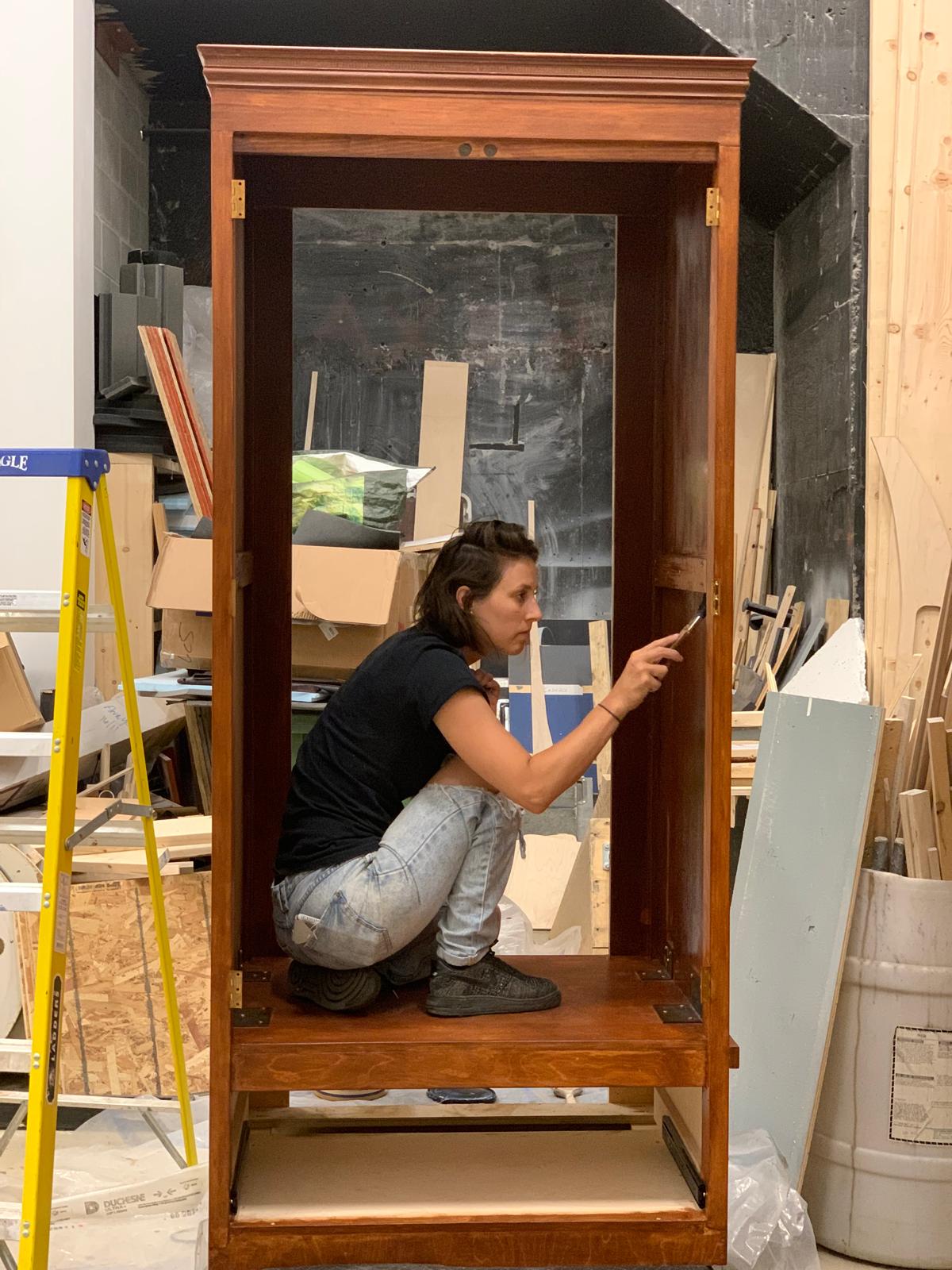Meet The Artist: Emily Nicole Tucker
Emily Tucker created the Set Design for Play Dead. We would like to get to know her better – let’s Meet The Artist!
 Photo credits: Alastair Davies
Photo credits: Alastair Davies
Emily is a New York City-based scenographer and production designer, set to earn her Master of Fine Arts Degree in Design for Stage and Film from NYU Tisch School of the Arts in the Spring of 2025. She is a recipient of the Concordia University Student Research Award for Sustainability in Theatre and a Great Plains Theatre Conference design fellow. While completing her studies Emily has designed nine short films, six original operas for the American Opera Project 2024 Hudson Guild Opera Lab, two theatre plays, and the genre-defying “Play Dead.”
Previously, Emily spent over a decade as an international trapeze artist, performing with Cirque du Soleil, at fringe festivals, on cruise ships, in stadiums and theatres, and on television. Her circus career deeply influences her scenic design work, infusing it with her lifelong passion for transformative stage magic.
Emily, please tell us a bit about yourself and how you work.
I try to work from an emotional place when I design. If it’s scripted source material I always try to track where the turning points are for the characters and how the audience should feel. I am also a voracious researcher; I love getting lost in evocative imagery to ground my design work.

Photo credits: Alastair Davies
You originally come from the circus world and were on stage as an artist for a long time. How did your career path lead you to become a set designer?
In a way, it took a long time and from another perspective it feels like it happened overnight! I grew up performing and seeing a lot of theatre and dance so I was always immersed in the visuals of live performance. I developed a critical eye. Later, while touring and performing I used to take my art supplies with me around the world so that I could draw or paint or collage in my hotel rooms and backstage. My studio is full of pens from Japan and paints from Australia. But it was the Covid-19 pandemic in 2020 that inspired me to study design at University. It felt like a really wonderful opportunity to pursue a passion while my career was paused. In the end I became so creatively energized by the task of aestheticizing stories, that I just never went back to flying around. I feel really at home designing. It feels like all the parts of my creative personality combine to help me solve a big beautiful puzzle. It’s never boring.
You already knew People Watching before you started working together. How did you get to know each other? And how can we imagine working together with a collective?
Before I began designing I was a trapeze artist myself, so I met them all individually at various times through our network in Montréal. I think the earliest connection goes back 12 years. But I was introduced to their work as a collective in 2020 when the first 4 members began showcasing new choreography. I remember one performance took place in the grass of a park as the sun was setting. I was instantly enamored.
Working with a collective is wonderful! It’s a completely different process for me. As a designer with People Watching it’s my job to synthesize the artistic vision of 6 really incredible and creative minds. Obviously that takes a considerable amount of time, and can present challenges. But the advantage of slowing down is a result that is deeply considered and reflects true collaboration. It’s a product everyone is equally invested in and responsible for. It’s very rewarding and rare to be part of something that functions without hierarchy.

Photo credits: Cecilia Martin
Tell us about the set design of Play Dead. Do you have a specific approach to your work or is it all a creative process?
The design process for Play Dead was completely befitting to the company’s approach to devising new work. It took place over many artistic residencies and phases of research. We first began speaking about domesticity and liminal space. And we knew we wanted everything on stage to serve a dramatic purpose, to be used. So I had to do many iterations of research, prototyping, and designing individual scenic elements to test and support their creative ideas. While also maintaining one eye on the overall vision. My job was to create a playground for ideation. It was a lot of fun!
I’ll be honest though, it also felt intimidating to work this way at first. I had to let go of the desire to visualize the complete design in advance. I had to trust that we would arrive at the design together rather than on my own. It was very experimental, very freeing.

Photo credit: Alastair Davies
What inspired you for the set design of Play Dead?
It sounds cliche but I was mostly inspired by the types of characters the acrobats wanted to explore. They had wonderful references from art and film that gave me insight into where the show was headed. I felt the world needed to host moments where the mundane and the strange could meet. I tried to preserve that off kilter feeling as the set progressed.
What do you like most about the set design of Play Dead?
My favorite part of the set is the secrets it has. No spoilers! But it often feels like another character in the show. Which is really special to get to create, and a very playful process for me.
 Photo credit: Emily Tucker
Photo credit: Emily Tucker
This chair was broken during the creation process and its character ended up embodying the type of world we wanted to build. I like to think of it as the mascot for the development of the show.

